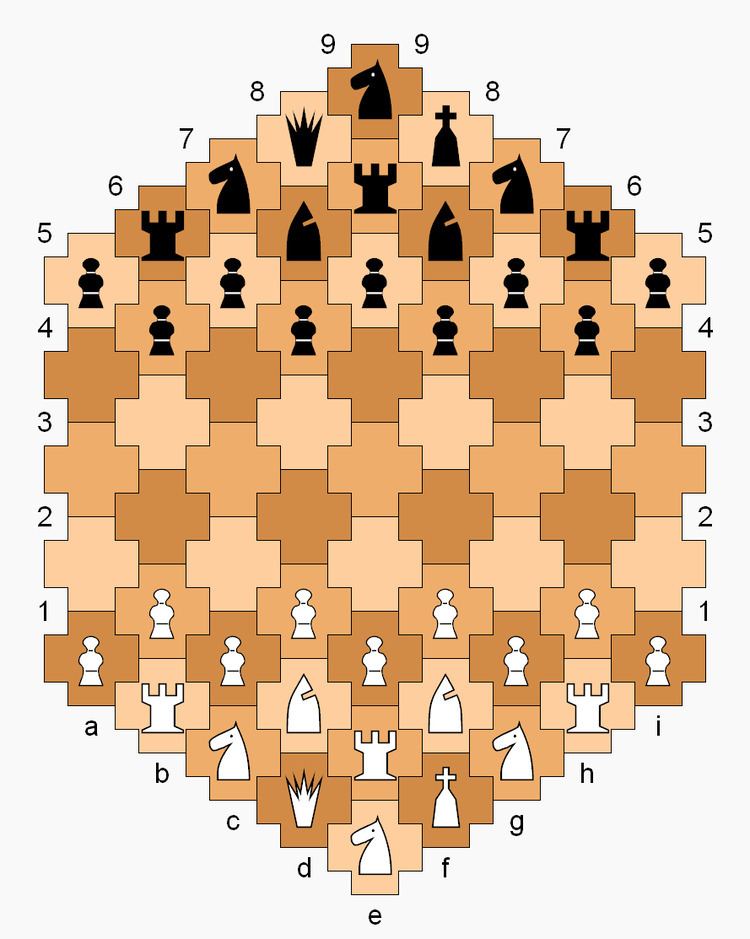 | ||
Cross Chess is a chess variant invented by George R. Dekle, Sr. in 1982. The game is played on a board comprising 61 cross-shaped cells, with players each having an extra rook, knight, and pawn in addition to the standard number of chess pieces. Pieces move in the context of a gameboard with hexagonal cells, but Cross Chess has its own definition of ranks and diagonals.
Contents
Cross Chess was included in World Game Review No. 10 edited by Michael Keller.
Hexagonal features
The Cross Chess board geometry has the same features as hexagon-based chessboards; however, diagonals and ranks are defined differently in Cross Chess from Gliński's and Shafran's hexagonal variants, resulting in move possibilities more akin to standard chess. (E.g., a bishop has six diagonal move directions in Glinski's hex chess, whereas a Cross Chess bishop has four directions; a rook has six directions in Glinski's, whereas along ranks and files on the Cross Chess board, it has four.) As with hex-based boards, three cell colors are used, but same-color cells highlight horizontal ranks on the Cross Chess board, not diagonals.
Game rules
The diagram shows the starting setup. Special rank and diagonal paths determine how pieces move, as described below. Check, checkmate, and stalemate are as in standard chess. However a pawn has no initial two-step option, and a rook can make a one-step diagonal move.
